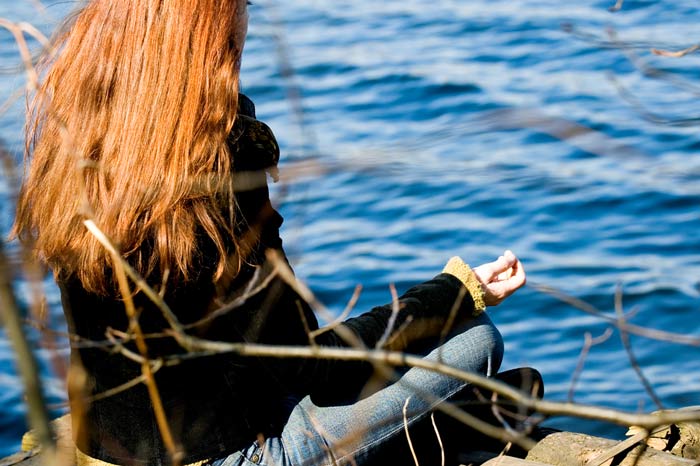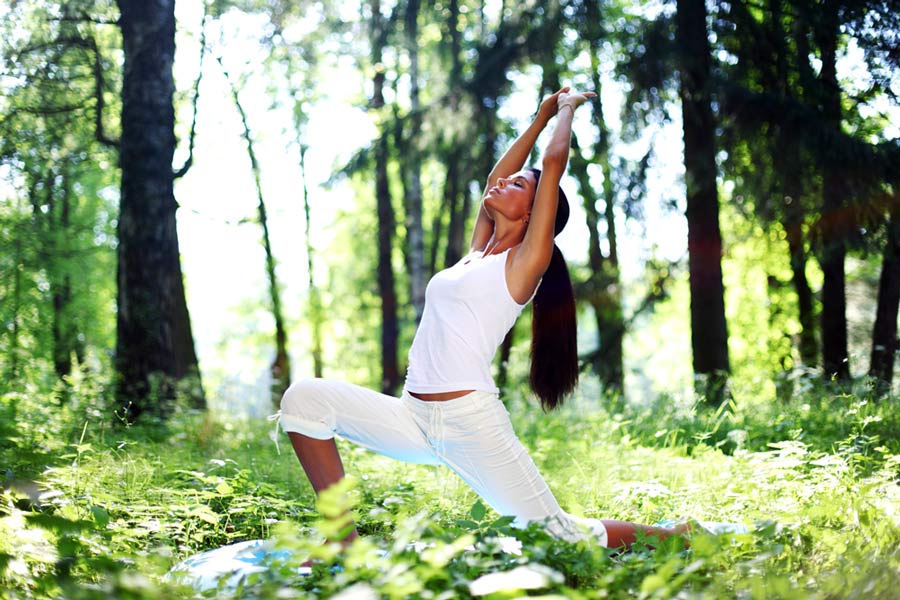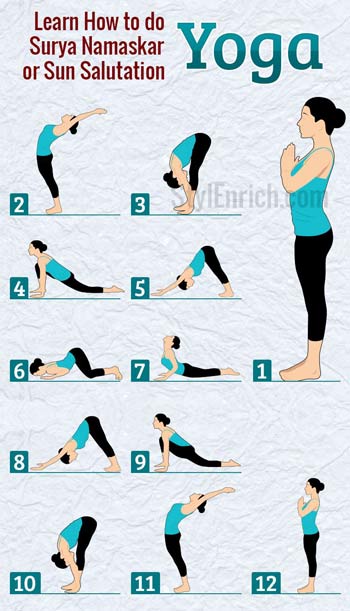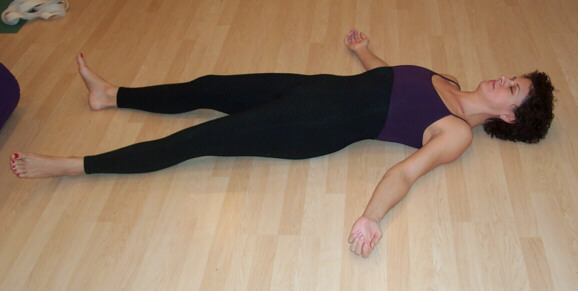“Yoga is indeed the oldest existing physical-culture system in the world.”

BY Foras Aje
Yoga is all around us these days. As a form of physical exercise, Yoga indeed is a force to be reckoned with. But when starting out just how can one go about using it for beginners? Well here are some answers…
What is yoga?
The word yoga, from the Sanskrit word yuj means to yoke or bind and is often interpreted as “union” or a method of discipline. Its ultimate goal is the union of man with God or the universe in one breath. Furthermore, it aims to liberate the spirit as the mind and spirit are equally involved in its practice.
Today most people practicing yoga are engaged in the third limb, asana, which is a program of physical postures designed to purify the body and provide the physical strength and stamina required for long periods of meditation.
I have been doing Yoga for quite some time now, 6 years to be exact and since the first day I swore off free-weights and exercise machines, my use of Yoga and other body weight exercises like Hindu-Push ups (in my honest opinion a Yoga derivative) has been the main method for keeping fit. Of course adhering to a proper diet when using yoga for beginners or even an advanced practitioner always helps increase one’s fitness and health.
The Benefits of Yoga
Yoga is indeed the oldest existing physical-culture system in the world. Besides being a systematic and scientifically proven path to attaining physical fitness, here are some of the many benefits of it:
- It broadens mental faculties.
- It leads to acquisition of control of involuntary muscles and organs in the body.
- It keeps the arteries, veins and muscles elastic which results in delayed ageing.
- It increases flexibility.
- It opposes violent muscular motions as they produce large amounts of lactic acids in the fibers.
Choosing the Right Yoga Style

There are many different styles of yoga being taught and practiced today. Although all of the styles are based on the same physical postures (called poses), they are all slightly different as their names suggest. They include Ashtanga Yoga; Bikram Yoga; Iyengar Yoga; Kundalini Yoga Sivananda Yoga and Nude Yoga.
With so many types and styles one can and will get confused on choosing the right one to practice, therefore I will be presenting the poses in their groups with explicit instructions and details for optimal success in Chapters 2 and 3 of the e-book; Fitness: Inside & Out.
Here are the yoga poses to be learned as a beginner which can aid or supplement your knowledge from your yoga classes, books and or DVDs.
Yoga Poses to Learn first:
The Sun Salutations: This is the very core of yoga itself.
This exercise is a combination of Yoga Poses, Breathing exercise, Sun Bathing and Prayer. It is the warm-up of a yoga class or personal yoga session and is a combination of 12 poses that are performed in a synchronized motion with emphasis on rhythmic breathing.
Since they mildly exercise the arms and legs and are often recommended for obesity, depression and fitness they form an integral part of any kind of yoga session or style. Several Martial Artists, Indian and African Wrestlers perform tons of rounds of these exercises alone, so in learning yoga for beginners, needless to say, this will be a guaranteed must-know.

The Shoulder Stand: When starting out with yoga don’t be intimidated by the name of this pose at all or how it may look. Even for a beginner, this yoga pose is indeed very simple. However, it is actually a very important pose and arguably the most important yoga pose for beginners, intermediate and advanced practitioners as its Sanskrit name (Savangasana) actually means the “all members” or “all limbs” pose, meaning it affects all parts of the body.

Be aware that some poses (such as this one) do have specific counter poses, so if you’re taking a Yoga fclass, make sure you are taught these poses to counter-act and balance the effects of the Shoulder-stand pose on the body, these are the Bridge and fish poses. I have taken the measures to include this in my e-book in chapter 3 of Fitness: Inside and Out for your edification with illustrative diagrams and descriptive details for your optimal success.
The Corpse Pose: Okay, when you commence with a Yoga lesson or course, you’ve got to learn this Yoga Pose. It is the relaxation pose that is usually executed during and after your session as a means of relaxing the muscles used for your yoga exercise. At the end of a session, it is usually done for about 15 minutes and one always comes out feeling refreshed after its execution.

Taking it to the next level
In addition to these poses above, there are other poses that should be included as you go further.
These are:
- The Forward Bending exercises: Head to Knee pose, Plough Pose and Wind relieving pose
- The Back Bending Exercises: The Bow, Inclined Plane and Wheel Poses
- The Spinal Twist
- The Balancing Exercises: The Peacock, Crow, Side Plank and 4-limbed staff Pose
- The Exercises in Sitting and Standing Positions
- The Abdominal and Breathing Exercises.
Each of these groups has several variations on the root poses; however, let me tell you a secret that would go a long way in aiding you when seeking a roadmap to learn yoga for beginners. Do at least 24 round of the previously mentioned Sun Salutations and the ease in executing these poses will come almost naturally! Trust me.
There are several styles of Yoga to pick from and in seeking the right style of Yoga for beginners; it might be quite difficult to pick the best. This is why I have integrated the various styles ranging from Inyengar, to Kripalu to Hatha Yoga for the ease of the beginners who maybe interested in Yoga. From research and observation, it will be safe to say that Hatha Yoga (mostly executed in the Sivananda style of Yoga) may be the best route to go. In fact all other styles borrow from it.
One other factor that I must stress is to adhere to a proper diet when starting Yoga for beginners as this increases one’s health and aids the numerous poses to both strengthen and detoxify you. This will – as a result of the symbiotic relationship that exists between Yoga and a proper diet – speed up an increase in fitness, weight loss, focus and the ability to execute these poses easily.
Though Yoga for beginners may best be learned from a certified instructor, or books, your own practice will remain paramount for your mastery of this form of physical culture.
Moreover, keep in mind that as a beginner doing yoga, not unless you intend to do lots of Sun Salutations as mentioned above, you may still want to incorporate some body-weight resistance poses (that co-incidentally are still Yogic in origin) such as the Hindu-Push-ups and Squats and the Bridge (now this and the first one are basically Yoga poses in motion friends…). To ensure that this wise combination is accomplished I have made sure to include some body-weight exercises such as aerobic and anaerobic calisthenics to use to supplement your yoga workout.
This combination will see that till you have mastered the use of Yoga poses to make a complete session, you are still burning up enough calories and exercising the muscles for both weight loss and fitness.
Doing Yoga is fun, exhilarating and extremely rewarding for lots of reasons that may have already got you researching about it, so needless to say, choosing this exercise, even as a beginner, will go a long way into making for a fitter and healthier you.
Foras Aje is an independent researcher and author of Fitness: Inside and out, which provides tips on how to improve and maintain your health using all natural methods. To learn more, visit Mr Aje’s author profile.
(Article originally published on Body, Mind and Soul)
